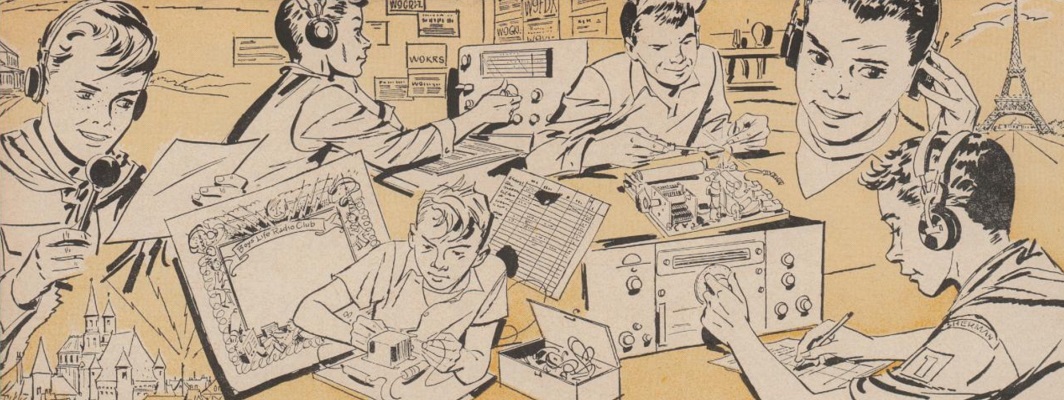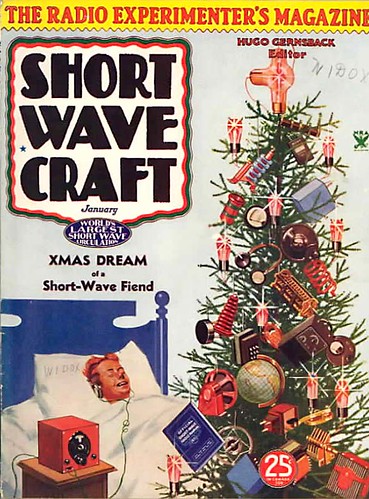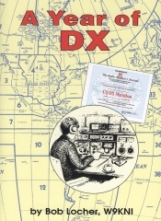Christmas has come and gone – we had a great time here in Kansas. We had friends over Christmas Eve for dinner. The XYL made a huge feast and I took advantage of the home cooking. Meanwhile, we tracked Santa via the NORAD/Google Earth website. At 7pm, we were actually able to raise Santa via EchoLink and the USA Reflector. The kids enjoyed talking to Santa and where able to get in their last minute requests. After the guests left, I helped the 5 year-old put out milk and cookies for Santa. Then it was upstairs for a bedtime reading of The Night Before Christmas. Once the harmonics were snug in their beds (… not sure about the dancing sugar plums, more like dancing Zhu Zhu hamsters), the elves went into overtime setting up for the following morning (to include hanging the stockings with care). With the work finally complete, I was able to watch the last 30 minutes of It’s A Wonderful Life. I have seen it a million times, but always enjoy the sappy ending.
Christmas morning finally arrived. With a flurry of discarded (and ever growing pile of) wrapping paper – treasures were revealed. Lots of toys for the girls – to include an astronaut Barbie doll for the 5 year old (oddly enough, they don’t make a ham radio Barbie). I received an excellent book: Array of Light: Straight Talk About Antennas and Related Subjects (Third Edition) by Tom Schiller, N6BT. My dad picked the book up for me at Pacificon and I was quite surprised when I opened it. Mr. Schiller is a prolific author of antenna articles, co-founder of Force 12, and the dad of one of my good high school friends. Little did I know back then that my friend’s dad was a ham radio guru.

Next out of Santa’s sack with my name on it was the DVAP.

The DV Access Point Dongle is a neat device that plugs into an internet-connected computer’s USB port and allows you to access the D-Star network without having to go through a local D-Star enabled repeater. With my Icom IC-92AD, the DVAP is a perfect solution to access D-Stars. With the IC-92ADs ability to monitor two frequencies simultaneously allows me to connect and monitor a D-Star reflector or repeater while also listening to my embedded EchoIRLP node. It is a veritable cornucopia of ham radio VOIP.




 Last week was busy – I spent the whole time down in Seoul attending meeting after meeting with my evenings spent on a bunk bed in a communal room (trying to save a little cash for Uncle Sam). The week was productive, but tiring. The main US military garrison in Seoul,
Last week was busy – I spent the whole time down in Seoul attending meeting after meeting with my evenings spent on a bunk bed in a communal room (trying to save a little cash for Uncle Sam). The week was productive, but tiring. The main US military garrison in Seoul,  However, by Saturday morning I was still tired and unmotivated to put up my Buddipole… despite the lure of the 10M contest. I did have a QSO with my dad via EchoLink. He used an app on his Android cell phone and connected through my EchoIRLP node (EchoLink Node #496698 and IRLP Node #3370). My friend brought by some freshly made
However, by Saturday morning I was still tired and unmotivated to put up my Buddipole… despite the lure of the 10M contest. I did have a QSO with my dad via EchoLink. He used an app on his Android cell phone and connected through my EchoIRLP node (EchoLink Node #496698 and IRLP Node #3370). My friend brought by some freshly made 


